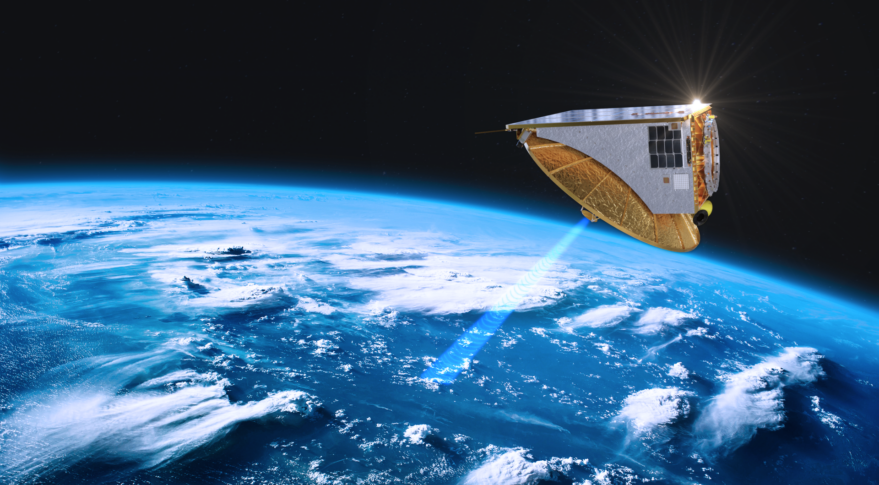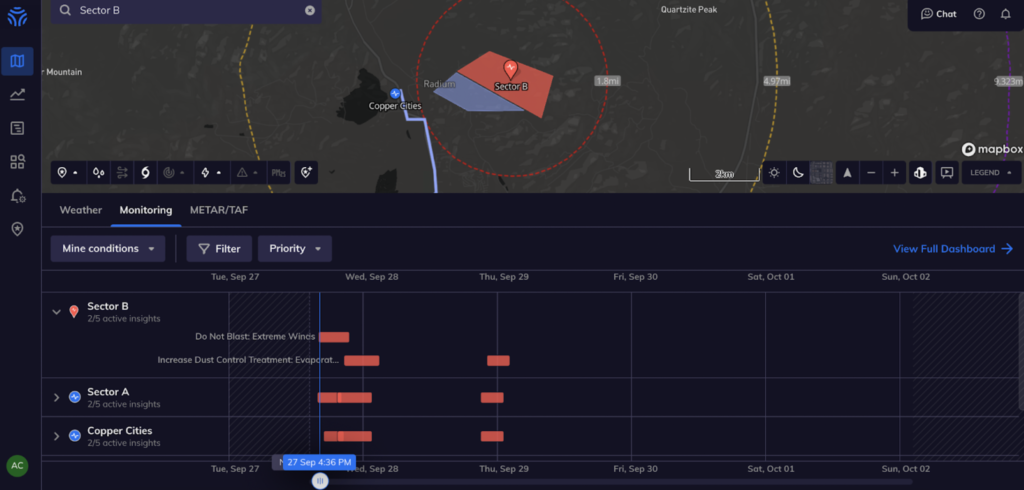Amanda Stutt | January 6, 2023 |

Image from Tomorrow.io.
Tomorrow.io, a Boston-based climate and weather intelligence company has been making news headlines with its technology and is partnering with miners to schedule blasting operations, monitor routes and highways and put protocols in place to protect workers from extreme weather, based on its forecasts.

For the past 40-50 years companies that once comprised the private weather industry would repackage data from the US National Oceanic and Atmospheric Administration (NOAA) and its predecessor agencies to sell it. NOAA is a public data model which was not built for regional forecasts or mass alerts and does not cover remote locations well.
Its data, by the time it reaches people, is already three days old.
Tomorrow.io said its technology can refresh data every three hours and plans to launch 30 satellites equipped with meteorological radar that can monitor ocean activity many weather stations aren’t able to decipher until it hits the coast.
Last month, the six-year-old company was named a leader among climate risk analytics providers. It has raised $260 million and has a team of over 40 data scientists. Its three founders met in the Israeli air force.
Rei Goffer, co-founder and its chief strategy officer, recalls piloting an F-16 with a “super generic” one-page report listing winds and cloud patterns, without any specifics for his route or aircraft.
“It’s a little more technical than what you’d see on TV,” he told Bloomberg. “That’s the state of the art in weather.” The veterans formed their company to tailor forecasts for specific industries that depend on predictable weather, such as airlines and sports leagues. Tomorrow.io aggregates existing data—from weather stations and sensors slapped on buoys and balloons—and mixes in other signals it collects from cell towers and car windshield wipers, an approach the company calls the “weather of things.”
It has built its own proprietary network of weather forecasting technology, satellites equipped with radar, for a fraction of the cost of a regular satellite and about the size of a mini-fridge.
This year, it will deploy two more satellites adding to the one already in space. It is collaborating with NOAA and the satellites were funded in part by a $19 million grant from the US Air Force.
“It’s a changing of the tides – it’s the next generation of climate impact,” Dan Slagen, Tomorrow.io’s chief marketing officer told MINING.com. “Climate security is the new cyber security.“

Sample dashboard with insights on when to not blast, increase in dust. Image from Tomorrow.io.
“We’ll be the only company in the world with that, and additionally the only company that is able to really look in depth at remote parts of the world such as South America, Australia and Africa. Right now we basically don’t have access to real time weather forecasting over the oceans.”
“We’ve been able to basically translate weather data into weather insights,” Slagen said.
“We work with mining companies to identify specific job use cases that are impacted by weather and how to get around them so they are not impacted anymore,” Slagen said. “It’s a changing of tides – the next generation of climate impact.”
Monica Leal, director of mining sales said the technology signals a new generation of sustainable mining.
“Weather costs this industry millions – we need to have better systems in place,” she said.
“Companies are trying to reach sustainability goals by 2030 or 2050, but what can we do in the short term – what can we do now to decrease risk and to increase operational efficiency? This is where we come in.”
(With files from Bloomberg)
No comments:
Post a Comment